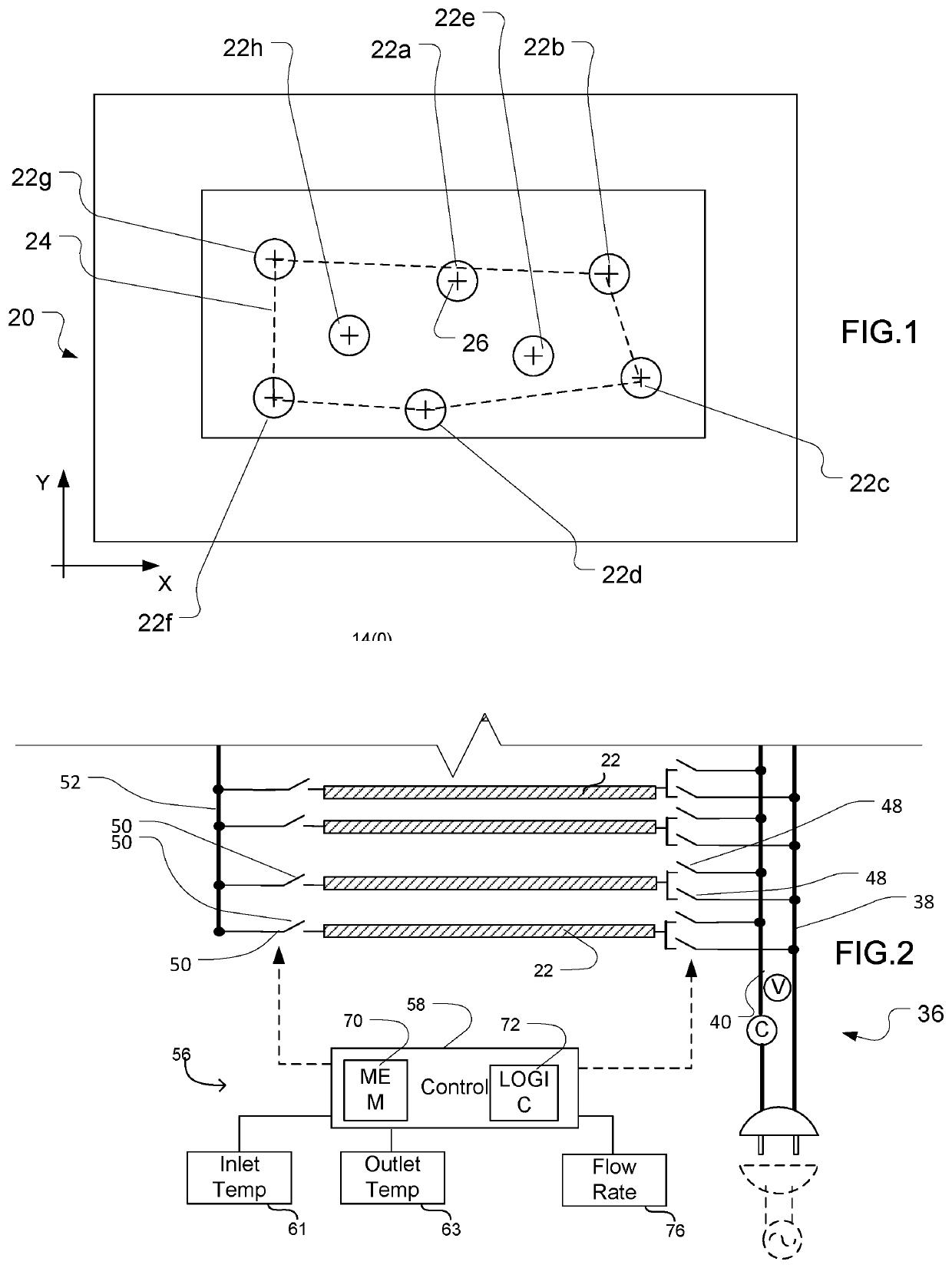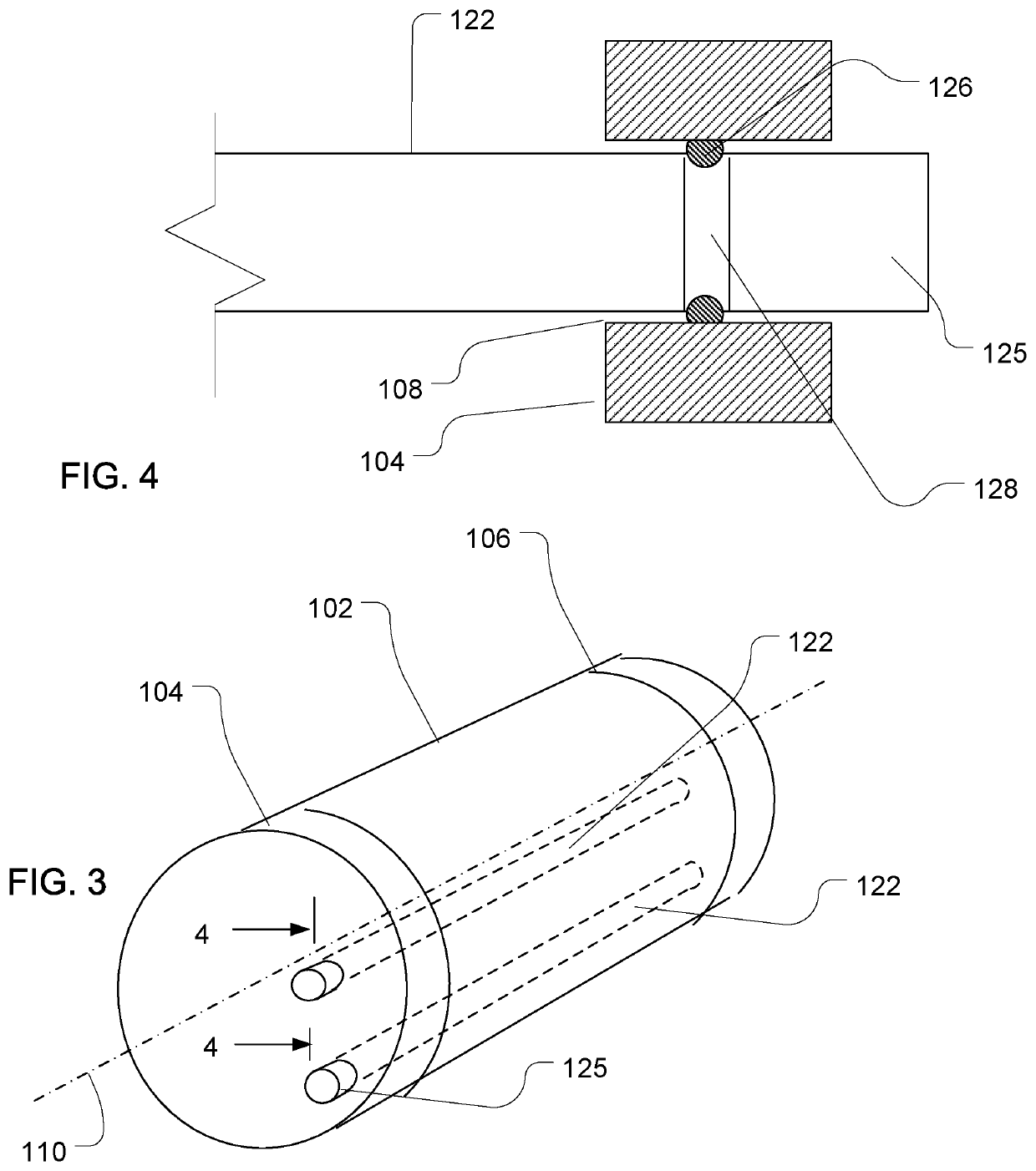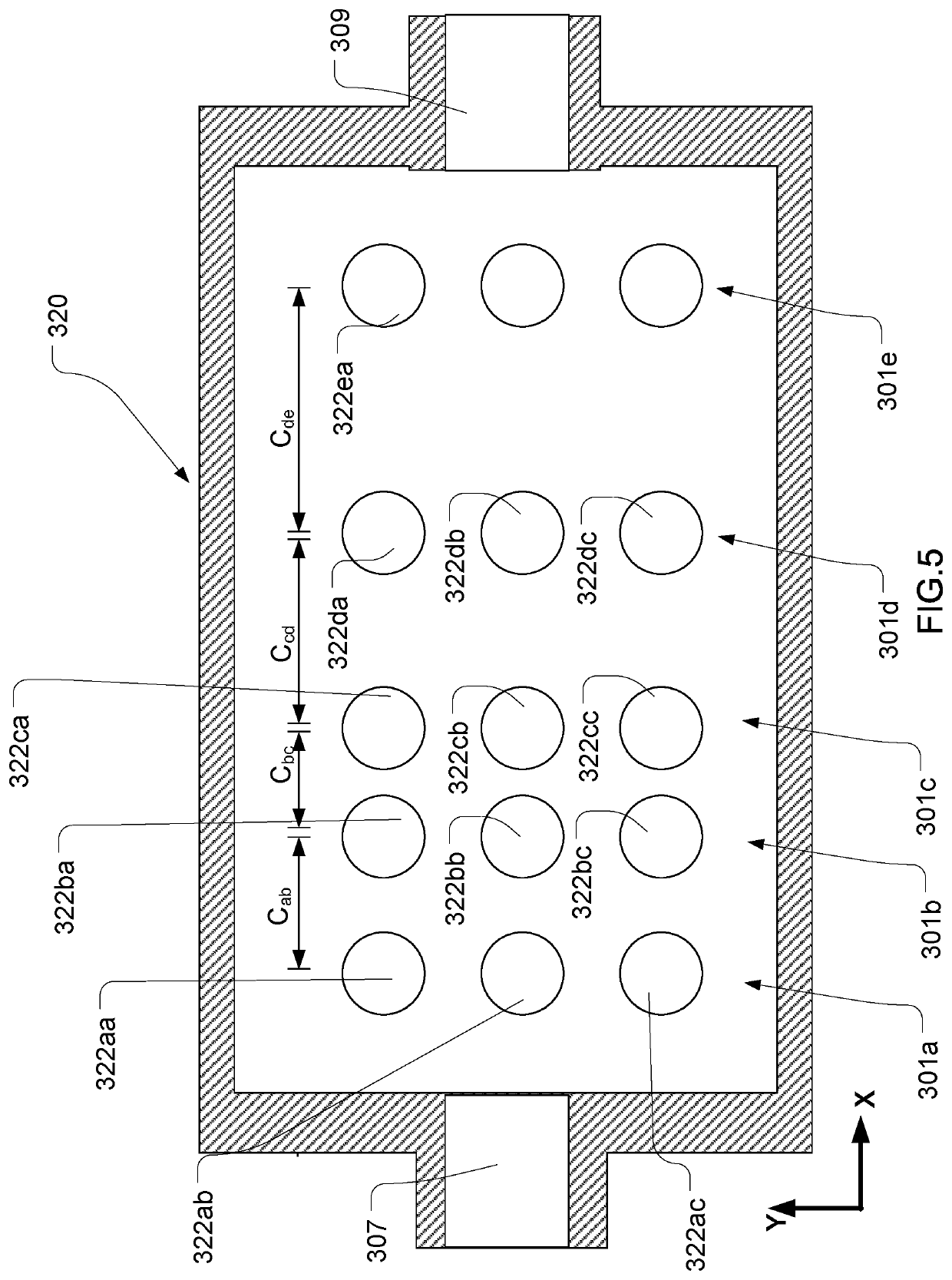Devices For Ohmically Heating A Fluid
a fluid heating device and fluid technology, applied in the direction of positive displacement liquid engines, survey, borehole/well accessories, etc., can solve the problems of complex mechanical elements, difficult to make such mechanisms respond quickly to rapidly changing conditions, and the selection of ohmic heaters of this type is limited, and the effect of complex mechanical elements
- Summary
- Abstract
- Description
- Claims
- Application Information
AI Technical Summary
Benefits of technology
Problems solved by technology
Method used
Image
Examples
Embodiment Construction
[0019]A heater according to one embodiment of the invention includes a housing 20 and numerous rod-like electrodes extending within the housing in the plane of the drawing. These electrodes are disposed in an irregular two-dimensional array. As depicted in FIG. 1, the electrodes are circular cylinders and thus are circular as seen in cross-section in FIG. 1. In the irregular array, each of the electrodes has multiple neighboring electrodes. For example, electrodes 22a, 22b, 22c, and 22d are all neighbors of electrode 22e. Unless otherwise specified, the location of a rod-like or cylindrical electrode as used herein refers to the location of the axis of the electrode. Electrodes 22b, 22c, 22d, 22f and 22g are “outer electrodes” as referred to herein in that they cooperatively define the outer boundary 24 of the array. As referred to in this disclosure, the outer boundary 24 of the array is the polygon formed by the shortest possible combination of imaginary straight lines extending i...
PUM
 Login to View More
Login to View More Abstract
Description
Claims
Application Information
 Login to View More
Login to View More - R&D
- Intellectual Property
- Life Sciences
- Materials
- Tech Scout
- Unparalleled Data Quality
- Higher Quality Content
- 60% Fewer Hallucinations
Browse by: Latest US Patents, China's latest patents, Technical Efficacy Thesaurus, Application Domain, Technology Topic, Popular Technical Reports.
© 2025 PatSnap. All rights reserved.Legal|Privacy policy|Modern Slavery Act Transparency Statement|Sitemap|About US| Contact US: help@patsnap.com



